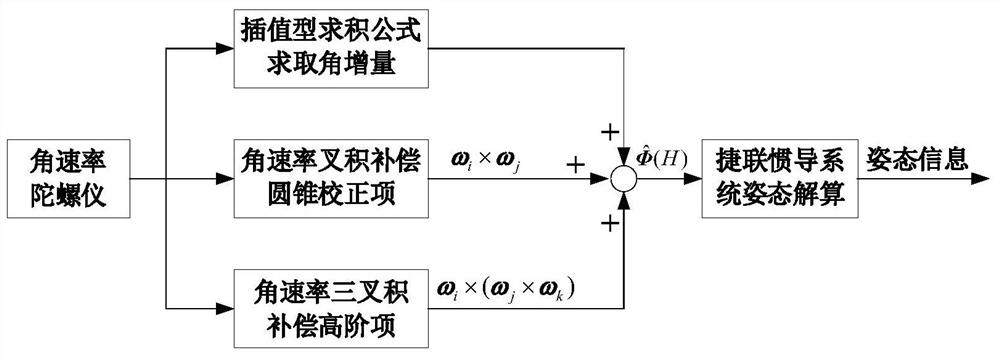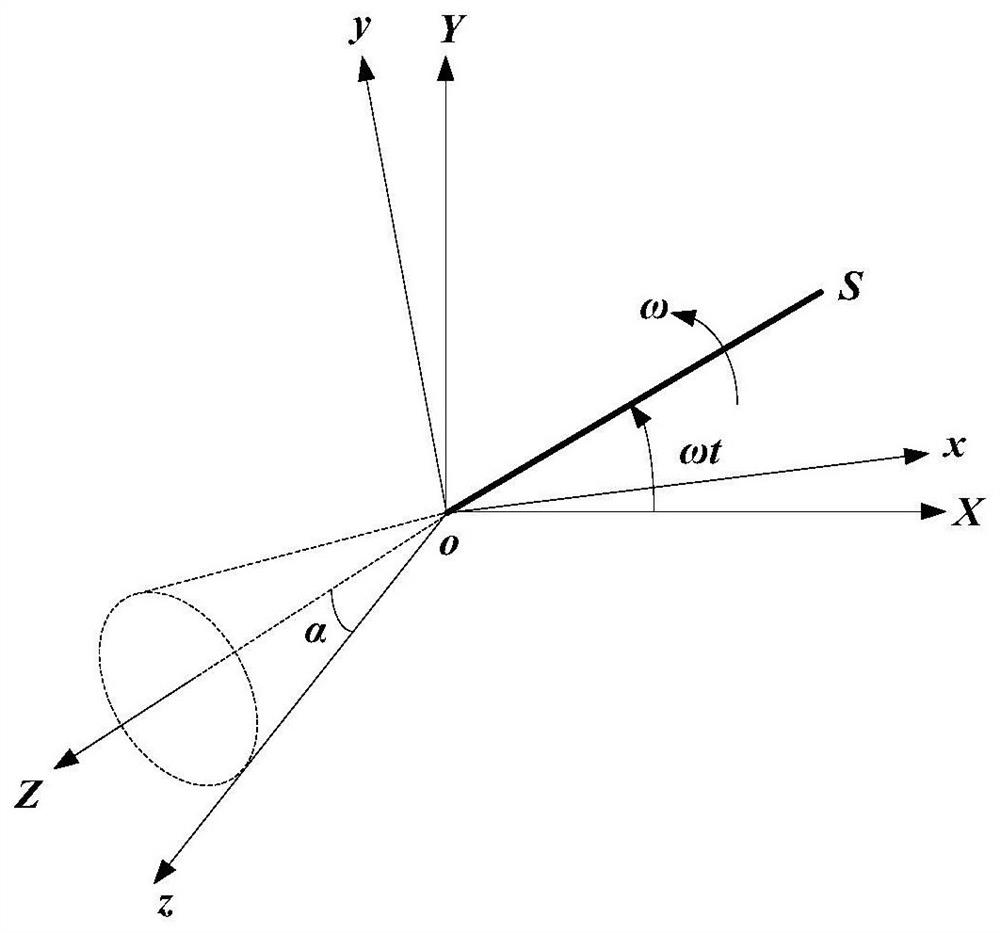High-order attitude enhancement method based on angular rate input
A technology of angular rate and attitude, applied in the field of strapdown inertial navigation attitude calculation, can solve the problem of low navigation accuracy
- Summary
- Abstract
- Description
- Claims
- Application Information
AI Technical Summary
Problems solved by technology
Method used
Image
Examples
Embodiment 1
[0084] Such as figure 1 As shown, the present invention provides a high-order enhanced attitude algorithm based on angular rate input.
[0085] Specific steps are as follows:
[0086] First, the theoretical value of the rotation vector in one attitude update cycle is derived under typical coning motion;
[0087] When the carrier performs a typical conical motion relative to the navigation coordinate system, the corresponding quaternion is shown in formula (19):
[0088]
[0089] Where ω is the angular frequency of the cone motion, and α is the half-cone angle of the cone motion. At this time, the projection of the carrier angular velocity vector ω(t) in the carrier coordinate system is:
[0090]
[0091] Then the z-axis theoretical value of the second-order rotation vector term δΦ cz (H) is:
[0092]
[0093] Z-axis theoretical value δΦ of the third-order rotation vector term Az and δΦ Bz They are:
[0094]
[0095] δΦ Bz =0 (25)
[0096] Due to δΦ Bz is...
Embodiment 2
[0137] In this embodiment, it is assumed that the gyroscope performs 2 samplings in one attitude update cycle (such as figure 2 shown), the specific steps are:
[0138] Step 1. In an attitude update cycle, sample the output of the gyroscope twice to obtain the angular velocity of the carrier motion ω 1 , ω 2 , and extract and store the angular rate ω in the last attitude update period in the computer -2 , ω -1 , ω 0 .
[0139] Step 2. Use the Lagrangian interpolation integration method to integrate the 5 angular rates, then the estimated value of the gyroscope angle increment in one attitude update cycle for:
[0140]
[0141] Step 3. Using the angular rate information in the previous attitude update period and the current attitude update period, calculate the estimated value of the second-order rotation vector term in the current attitude update period
[0142]
[0143] Step 4. Using the angular rate information in the previous attitude update period and the ...
PUM
 Login to View More
Login to View More Abstract
Description
Claims
Application Information
 Login to View More
Login to View More - R&D
- Intellectual Property
- Life Sciences
- Materials
- Tech Scout
- Unparalleled Data Quality
- Higher Quality Content
- 60% Fewer Hallucinations
Browse by: Latest US Patents, China's latest patents, Technical Efficacy Thesaurus, Application Domain, Technology Topic, Popular Technical Reports.
© 2025 PatSnap. All rights reserved.Legal|Privacy policy|Modern Slavery Act Transparency Statement|Sitemap|About US| Contact US: help@patsnap.com



